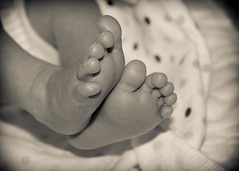 The birth rate in the United States hasn’t been this low in 100 years, leading social scientists to speculate on the role the Great Recession might be playing in family planning. The Associated Press reports:
The birth rate in the United States hasn’t been this low in 100 years, leading social scientists to speculate on the role the Great Recession might be playing in family planning. The Associated Press reports:
The birth rate dropped for the second year in a row since the recession began in 2007. Births fell 2.6 percent last year even as the population grew, numbers released Friday by the National Center for Health Statistics show.
“It’s a good-sized decline for one year. Every month is showing a decline from the year before,” said Stephanie Ventura, the demographer who oversaw the report.
The birth rate, which takes into account changes in the population, fell to 13.5 births for every 1,000 people last year. That’s down from 14.3 in 2007 and way down from 30 in 1909, when it was common for people to have big families.
A sociologist explains how the falling Dow might relate to declining birth rates:
“When the economy is bad and people are uncomfortable about their financial future, they tend to postpone having children. We saw that in the Great Depression the 1930s and we’re seeing that in the Great Recession today,” said Andrew Cherlin, a sociology professor at Johns Hopkins University.
“It could take a few years to turn this around,” he added.
The birth rate dipped below 20 per 1,000 people in 1932 and did not rise above that level until the early 1940s. Recent recessions, in 1981-82, 1990-91 and 2001, all were followed by small dips in the birth rate, according to CDC figures.
Despite this trend, there is no need to panic.
Cherlin said the U.S. birth rate “is still higher than the birth rate in many wealthy countries and we also have many immigrants entering the country. So we do not need to be worried yet about a birth dearth” that would crimp the nation’s ability to take care of its growing elderly population.

Comments